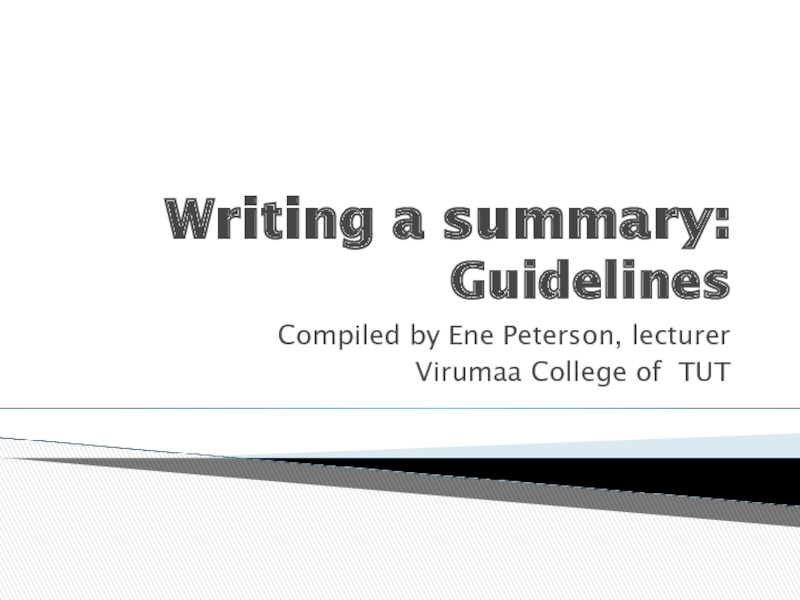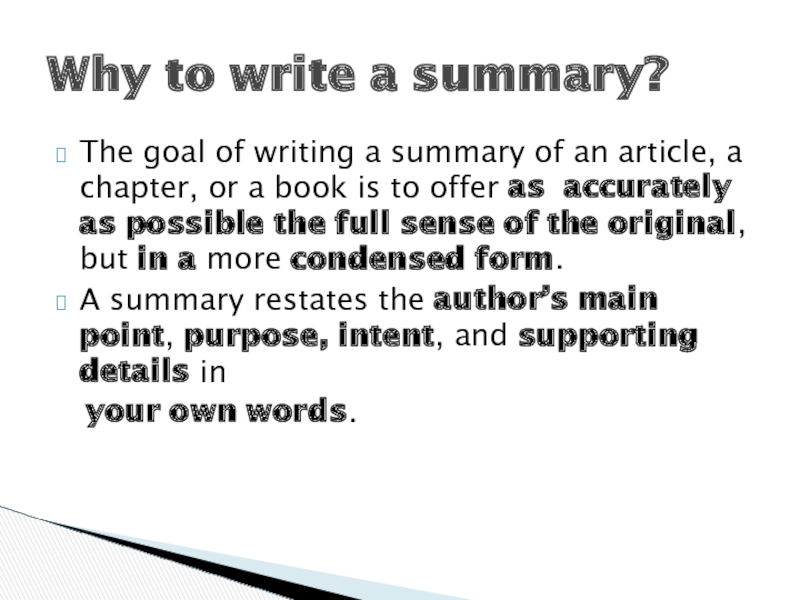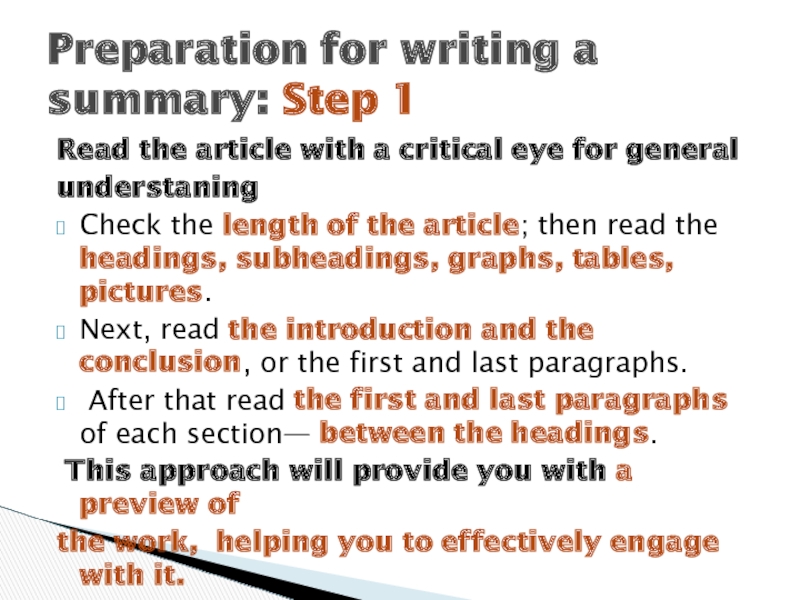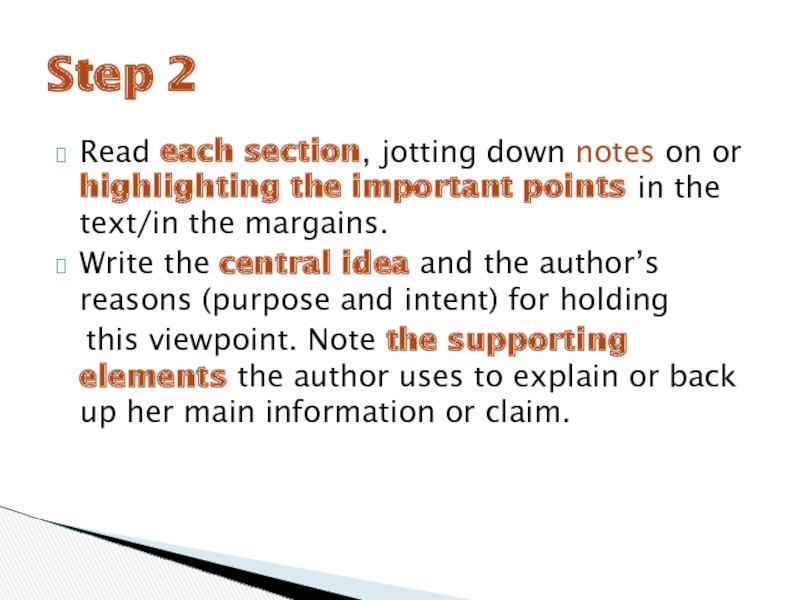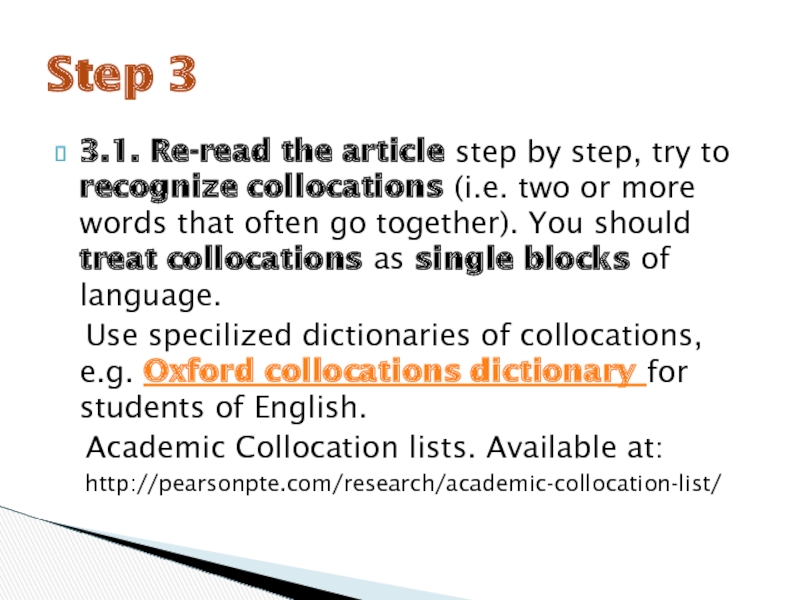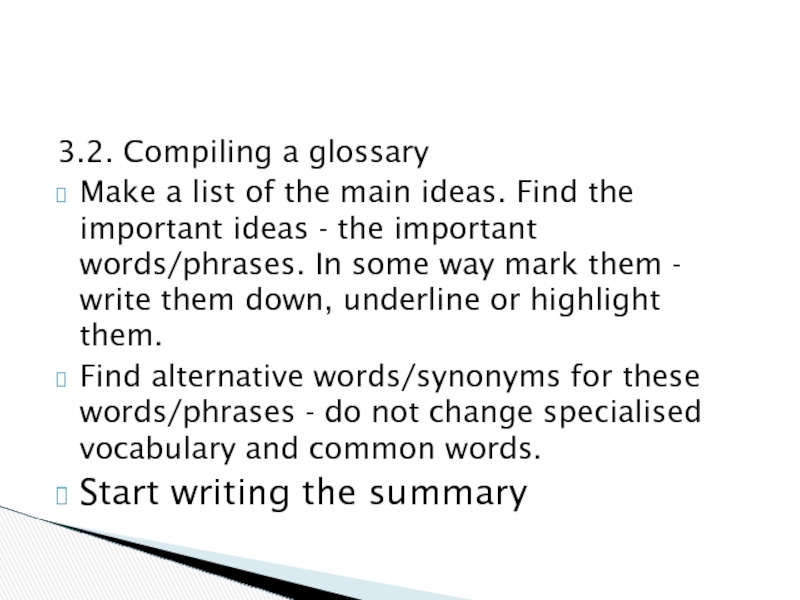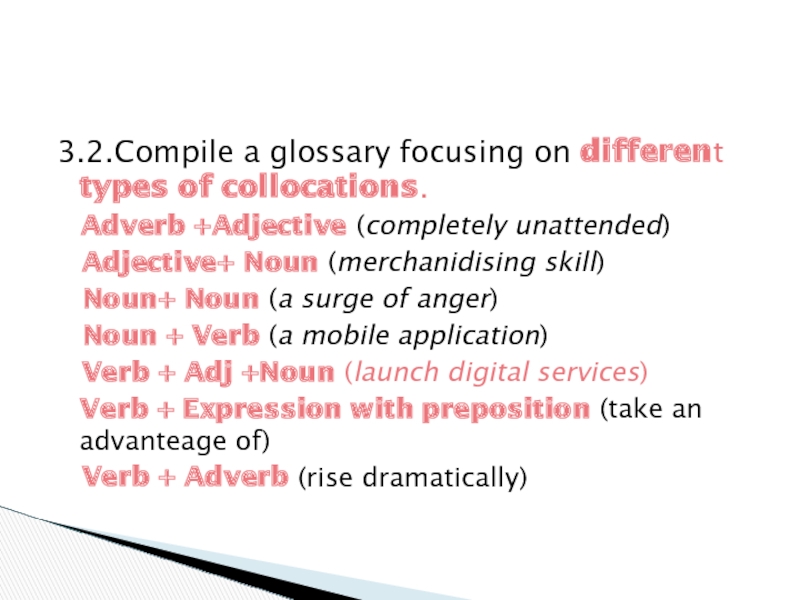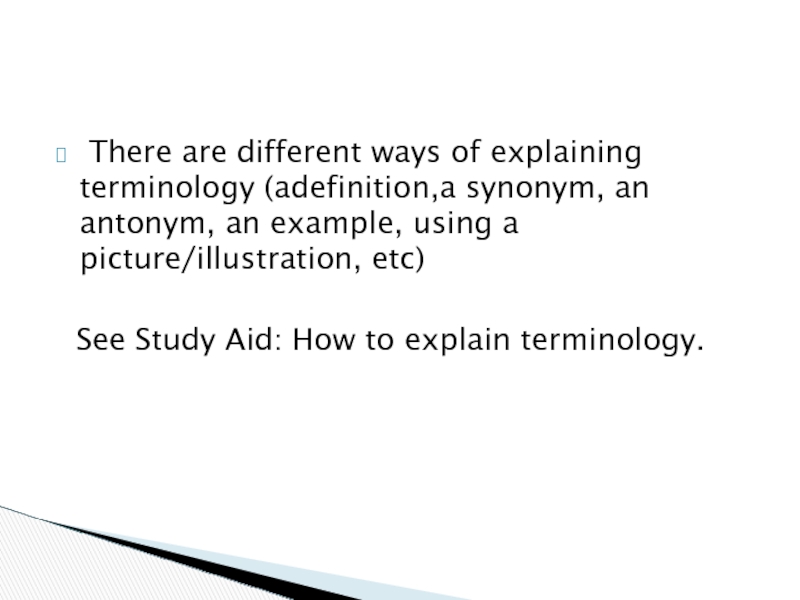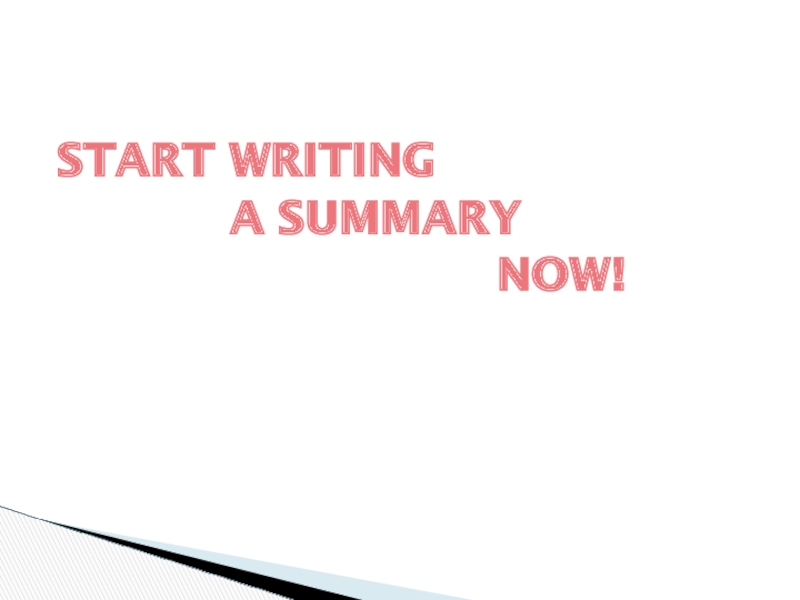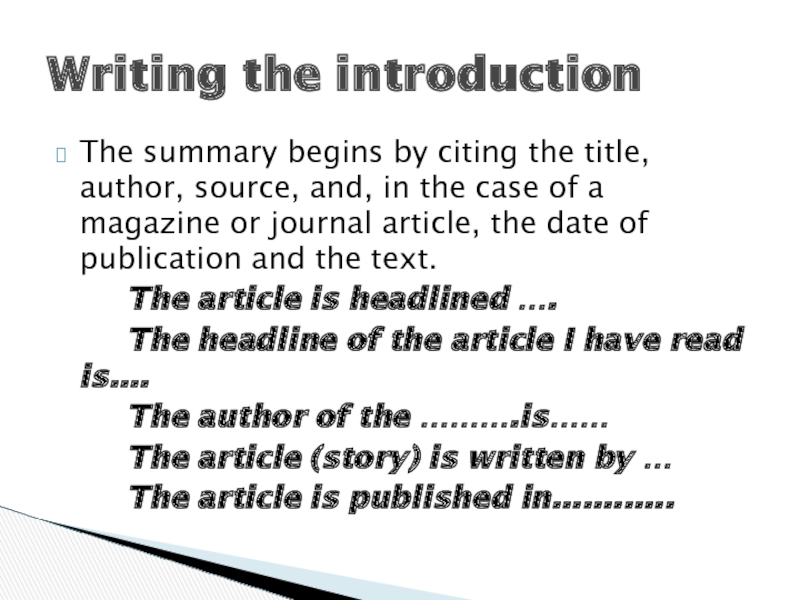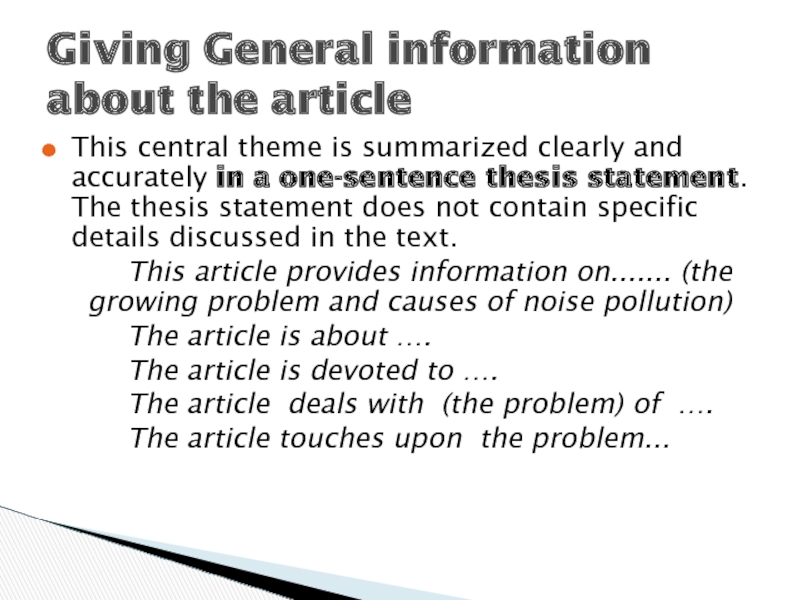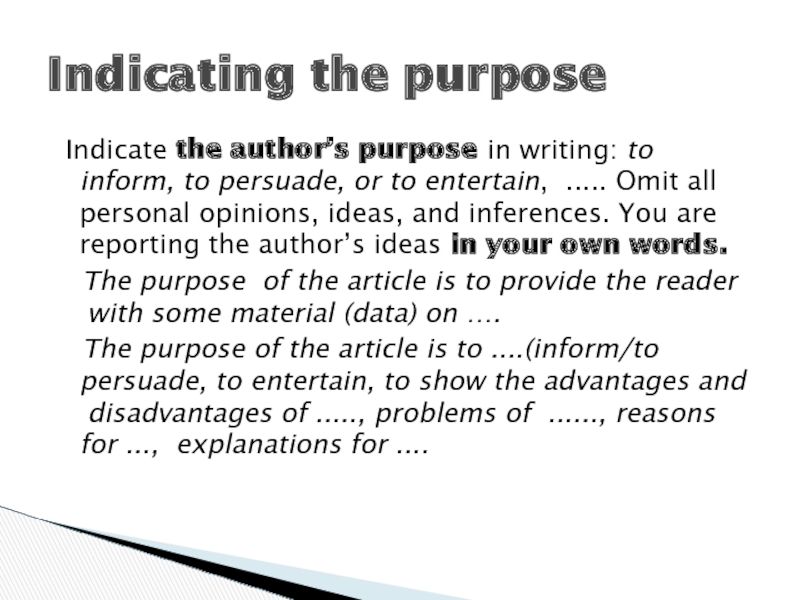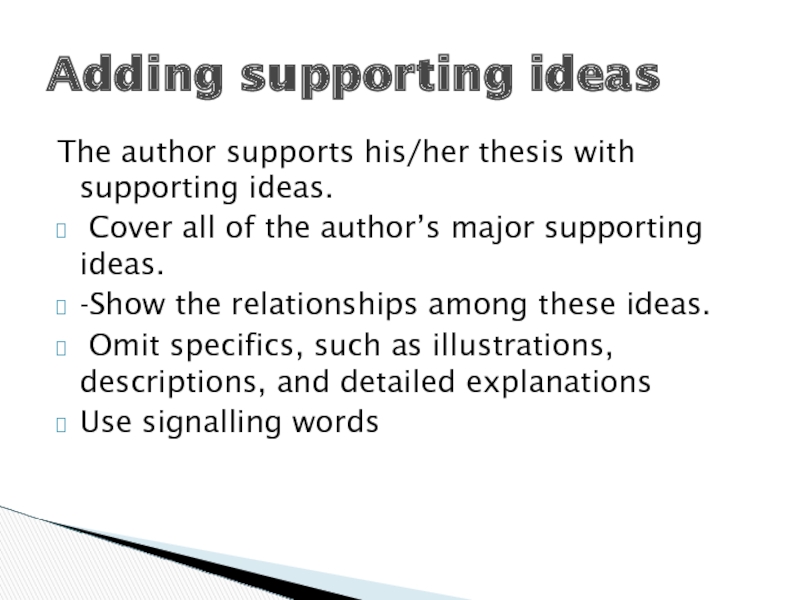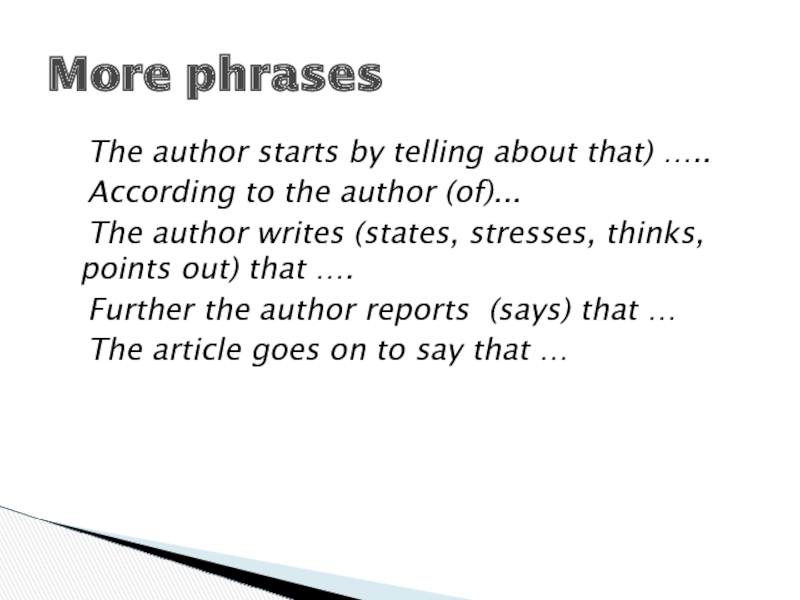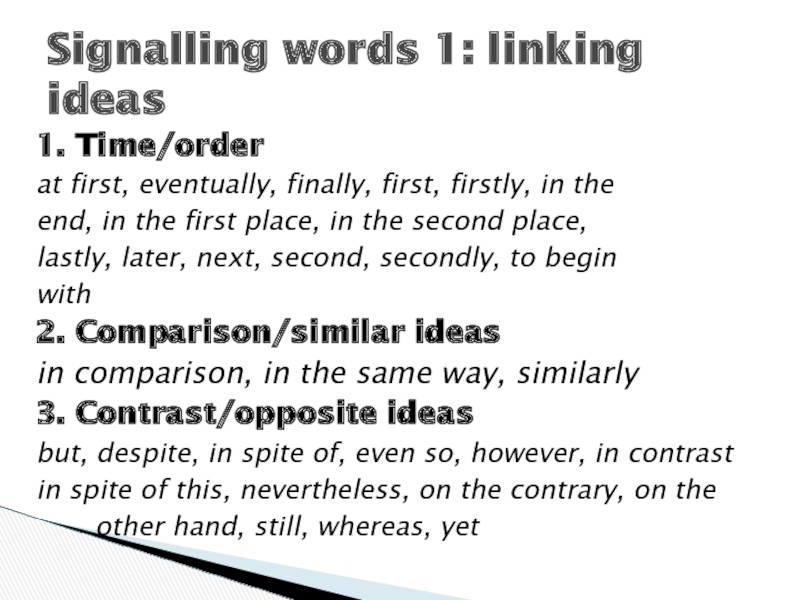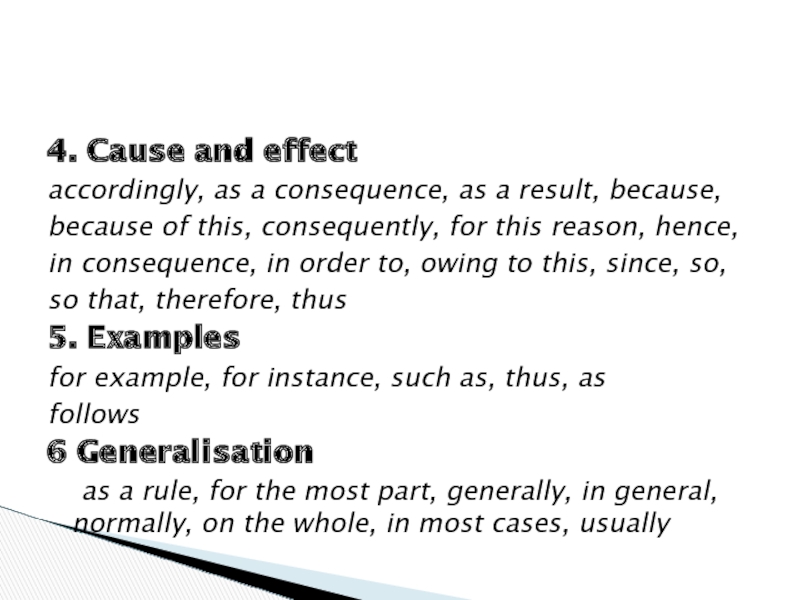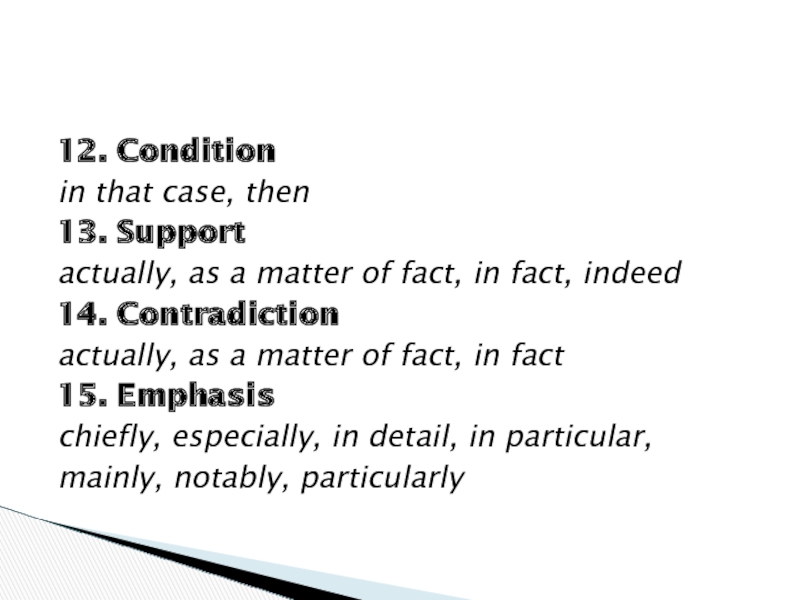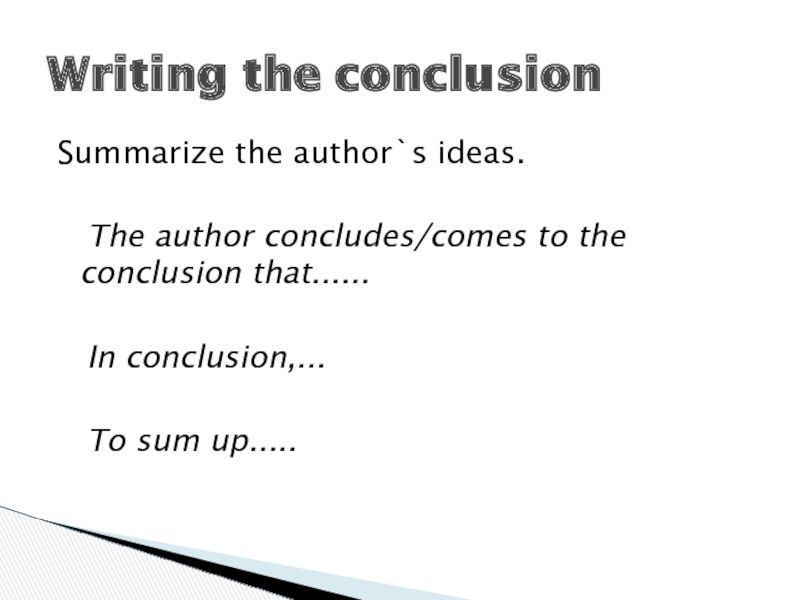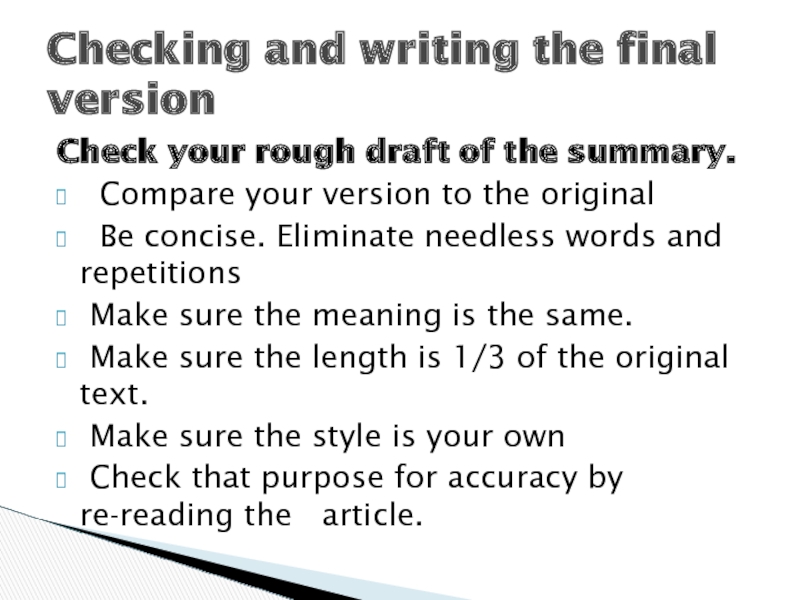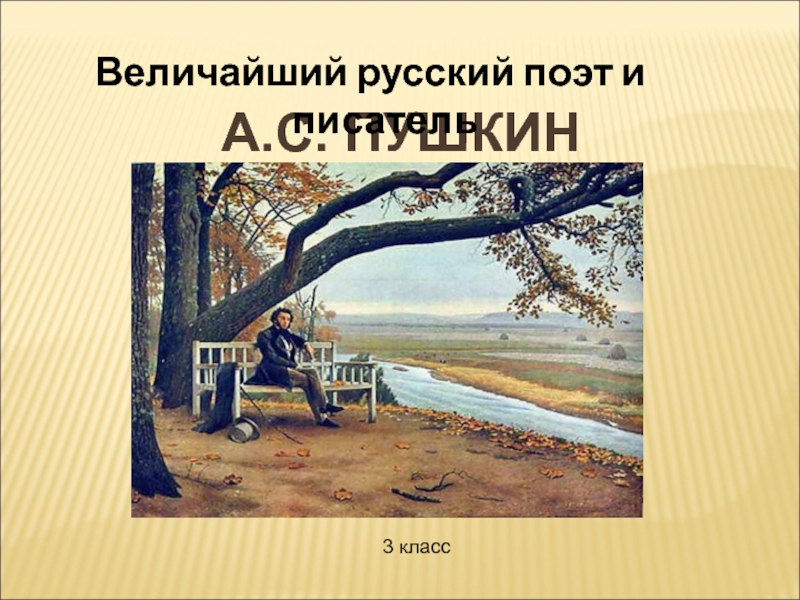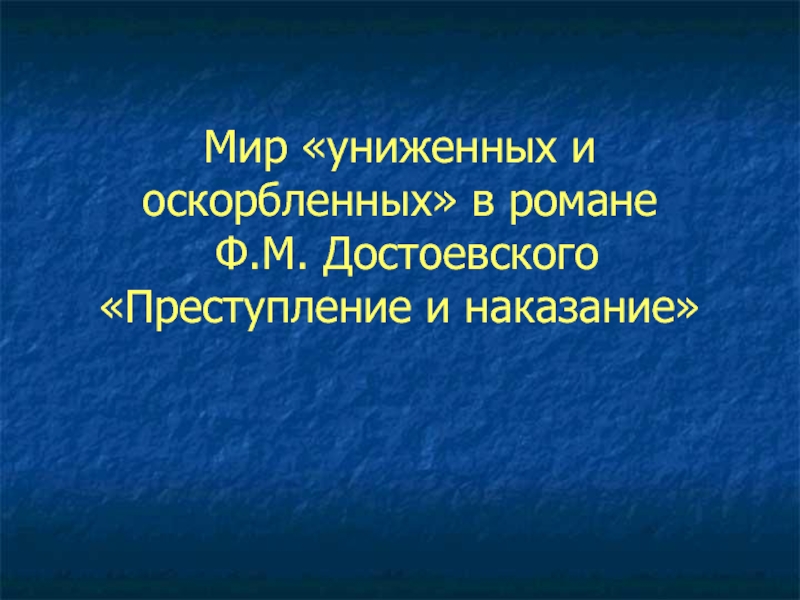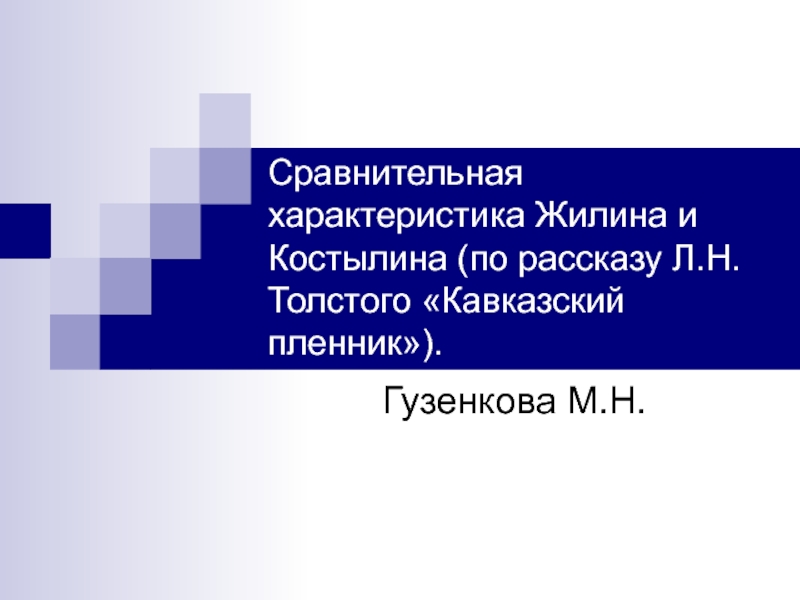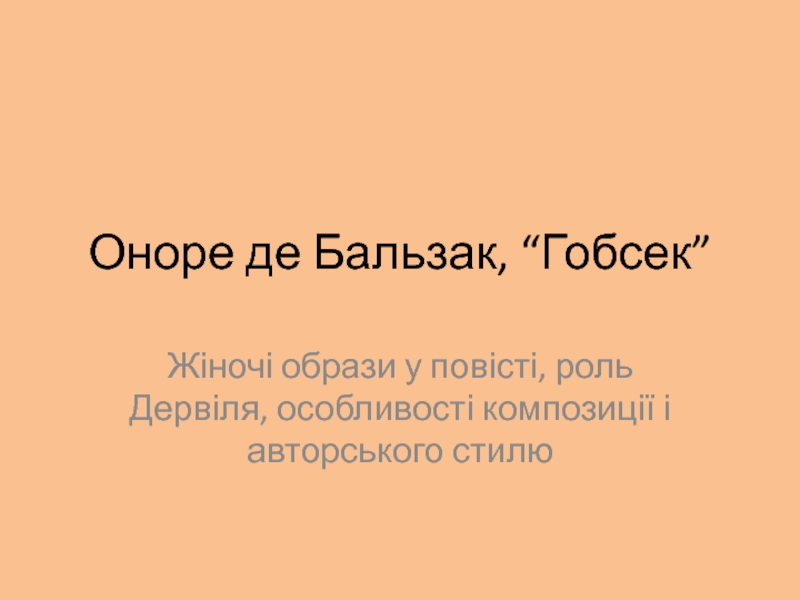- Главная
- Разное
- Дизайн
- Бизнес и предпринимательство
- Аналитика
- Образование
- Развлечения
- Красота и здоровье
- Финансы
- Государство
- Путешествия
- Спорт
- Недвижимость
- Армия
- Графика
- Культурология
- Еда и кулинария
- Лингвистика
- Английский язык
- Астрономия
- Алгебра
- Биология
- География
- Детские презентации
- Информатика
- История
- Литература
- Маркетинг
- Математика
- Медицина
- Менеджмент
- Музыка
- МХК
- Немецкий язык
- ОБЖ
- Обществознание
- Окружающий мир
- Педагогика
- Русский язык
- Технология
- Физика
- Философия
- Химия
- Шаблоны, картинки для презентаций
- Экология
- Экономика
- Юриспруденция
Writing a summary: Guidelines презентация
Содержание
- 1. Writing a summary: Guidelines
- 2. The goal of writing a summary of
- 3. Read the article with a critical eye
- 4. Read each section, jotting down notes on
- 5. 3.1. Re-read the article step by step,
- 6. 3.2. Compiling a glossary Make a list
- 7. 3.2.Compile a glossary focusing on different types
- 8. There are different ways of explaining
- 9. START WRITING
- 11. Writing the introduction The summary begins by
- 12. Giving General information about the article
- 13. Indicate the author’s purpose in writing:
- 14. The author supports his/her thesis with supporting
- 15. The author starts by telling about that)
- 16. 1. Time/order at first, eventually, finally, first,
- 17. 4. Cause and effect accordingly, as a
- 18. 12. Condition in that case, then 13.
- 19. Summarize the author`s ideas. The author
- 20. Check your rough draft of the summary.
Слайд 2The goal of writing a summary of an article, a chapter,
A summary restates the author’s main point, purpose, intent, and supporting details in
your own words.
Why to write a summary?
Слайд 3Read the article with a critical eye for general
understaning
Check the length
Next, read the introduction and the conclusion, or the first and last paragraphs.
After that read the first and last paragraphs of each section— between the headings.
This approach will provide you with a preview of
the work, helping you to effectively engage with it.
Preparation for writing a summary: Step 1
Слайд 4Read each section, jotting down notes on or highlighting the important
Write the central idea and the author’s reasons (purpose and intent) for holding
this viewpoint. Note the supporting elements the author uses to explain or back up her main information or claim.
Step 2
Слайд 53.1. Re-read the article step by step, try to recognize collocations
Use specilized dictionaries of collocations, e.g. Oxford collocations dictionary for students of English.
Academic Collocation lists. Available at:
http://pearsonpte.com/research/academic-collocation-list/
Step 3
Слайд 63.2. Compiling a glossary
Make a list of the main ideas. Find
Find alternative words/synonyms for these words/phrases - do not change specialised vocabulary and common words.
Start writing the summary
Слайд 73.2.Compile a glossary focusing on different types of collocations.
Adjective+ Noun (merchanidising skill)
Noun+ Noun (a surge of anger)
Noun + Verb (a mobile application)
Verb + Adj +Noun (launch digital services)
Verb + Expression with preposition (take an advanteage of)
Verb + Adverb (rise dramatically)
Слайд 8 There are different ways of explaining terminology (adefinition,a synonym, an
See Study Aid: How to explain terminology.
Слайд 11Writing the introduction
The summary begins by citing the title, author, source,
The article is headlined ….
The headline of the article I have read is....
The author of the ……….is……
The article (story) is written by …
The article is published in............
Слайд 12Giving General information about the article
This central theme is summarized
This article provides information on....... (the growing problem and causes of noise pollution)
The article is about ….
The article is devoted to ….
The article deals with (the problem) of ….
The article touches upon the problem...
Слайд 13 Indicate the author’s purpose in writing: to inform, to persuade,
The purpose of the article is to provide the reader with some material (data) on ….
The purpose of the article is to ....(inform/to persuade, to entertain, to show the advantages and disadvantages of ....., problems of ......, reasons for ..., explanations for ....
Indicating the purpose
Слайд 14The author supports his/her thesis with supporting ideas.
Cover all of
-Show the relationships among these ideas.
Omit specifics, such as illustrations, descriptions, and detailed explanations
Use signalling words
Adding supporting ideas
Слайд 15 The author starts by telling about that) …..
According to the author
The author writes (states, stresses, thinks, points out) that ….
Further the author reports (says) that …
The article goes on to say that …
More phrases
Слайд 161. Time/order
at first, eventually, finally, first, firstly, in the
end, in
lastly, later, next, second, secondly, to begin
with
2. Comparison/similar ideas
in comparison, in the same way, similarly
3. Contrast/opposite ideas
but, despite, in spite of, even so, however, in contrast
in spite of this, nevertheless, on the contrary, on the
other hand, still, whereas, yet
Signalling words 1: linking ideas
Слайд 174. Cause and effect
accordingly, as a consequence, as a result, because,
because of this, consequently, for this reason, hence,
in consequence, in order to, owing to this, since, so,
so that, therefore, thus
5. Examples
for example, for instance, such as, thus, as
follows
6 Generalisation
as a rule, for the most part, generally, in general, normally, on the whole, in most cases, usually
Слайд 1812. Condition
in that case, then
13. Support
actually, as a matter of fact,
14. Contradiction
actually, as a matter of fact, in fact
15. Emphasis
chiefly, especially, in detail, in particular,
mainly, notably, particularly
Слайд 19Summarize the author`s ideas.
The author concludes/comes to the conclusion that......
To sum up.....
Writing the conclusion
Слайд 20Check your rough draft of the summary.
Compare your version to
Be concise. Eliminate needless words and repetitions
Make sure the meaning is the same.
Make sure the length is 1/3 of the original text.
Make sure the style is your own
Check that purpose for accuracy by re-reading the article.
Checking and writing the final version
